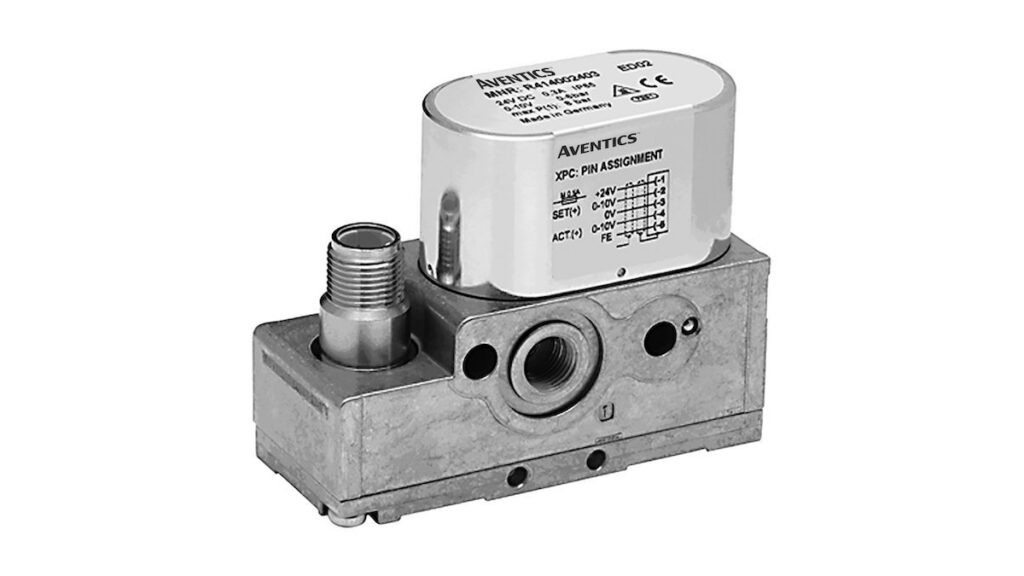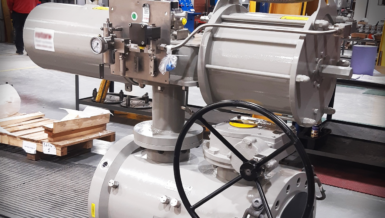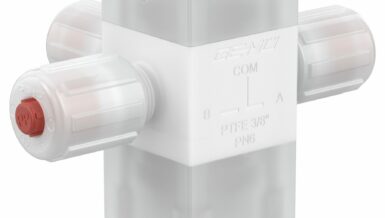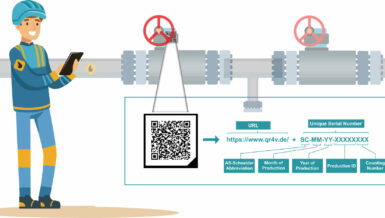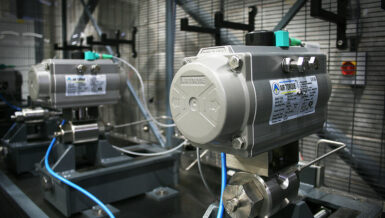By regulating pressure in their respective applications, proportional valves can precisely influence many other process variables, like flow, force, rotational speed, position, temperature, and level. They can replace staged pressure manifolds of several on/off valves with one dynamic valve. They also provide valuable feedback on system performance, making them a digital transformation enabler. This makes them ideal for variable pressure or flow applications where exact and repeatable performance is essential.
So how do you know which valve to choose?
In order to select the most appropriate proportional valve technology for your application, it’s essential to consider these five basic valve operation alternatives first.
Direct-acting proportional solenoids
Direct-acting proportional solenoids can incrementally control the opening or closing of the valve by acting directly on pistons or spools, which in turn adjust valve position, based on a varying voltage across the coil.
Pulsed air-piloted solenoids
Pulsed air-piloted solenoids open or close the main valve by loading and unloading air pressure in a pilot chamber. This loading or unloading of pressure moves a diaphragm that acts on a piston. The action of the piston is the mechanical force that opens or closes the valve. Piloted solenoid valves are pressure holding at power off.
Piezoelectric valves
For applications where low energy consumption is an advantage, OEMs and end users often use piezoelectric valves. Using very little power, piezoelectric elements in these valves distort their shape to open or close valves when voltage is applied.
Pneumatic positioners
Acting as pilots, pneumatic positioners signal a bigger valve to open or close by allowing air to enter or vent from a diaphragm or cylinder.
Electrical motor actuated valves
Electrical motor actuated valves are based on specific application needs, so they can vary in design, dimension and size. However, they all operate in the same way: A simple linear actuator opens and closes the valve.
Dynamic Versus Static Processes
Of these five, direct-acting proportional solenoids and pulsed air-piloted solenoids are used most frequently. Both designs have their benefits and range of capabilities, but one difference between them is the type of application they’re most suitable for. In basic terms, direct-acting valves are better for dynamic processes and air-piloted valves are great for applications with static setpoints.
One of the main reasons that air-piloted valves are perfect for static setpoints is that they’re cost-effective and energy-efficient. Another is their design. These valves include components, like rolling diaphragms and pulsed solenoid pilot valves, that move a piston to regulate pressure. The variation of internal workings provides allows different valve designs for specific performance levels.
Because their components switch often per setpoint change and are subject to wear, air-piloted valves aren’t suited for demanding requirements or constantly changing setpoints. But they are pressure holding at power loss, which is important for applications that require it.
With few mechanical parts and resilient construction, direct-acting proportional solenoid valves last longer in dynamic processes where valves cycle more frequently, and they simplify pneumatic layout schemes.
Direct-acting valves fulfill a significantly broader range of pressures, including a finer resolution of pressure control in applications that require small pressure changes. Overall, direct-acting proportional solenoid valves are faster and more responsive, and they deliver greater resolution to the applications they serve.
Reliable, Precise Control
In addition to their precision and versatility, proportional valves have other benefits. If used to cover different pressure stages, proportional valves can replace two to three different sized solenoid valves. And since they control for exactly the right amount of pressure needed, proportional valves also minimize expensive compressed air consumption.

Proportional valves can also contribute toward greater plant reliability, availability, and profitability. Take digitally enabled proportional solenoid valves, like Emerson’s AVENTICSTM Series 614 SentronicPLUS direct-acting valves, for example. When paired with an IO-Link module, IO Link Sentronic valves can automatically identify and configure themselves during component replacement, reducing maintenance time as well as complexity.
Driven via an AES Module or a G3 Valve Island, proportional valves can also be integrated in fieldbus connected installations. The Sentronic line can even be customized in its control performance parameters for your unique operating conditions once and then ordered as a factory standard with your own preset parameters. The AVENTICSTM Series ED02 offers a dynamic valve for reliable performance in a very compact footprint for minimizing machine size and weight.
By considering these fundamental aspects and valuable benefits, you can pick the right proportional pressure control valves for your application to provide reliable, cost-effective, compact solutions for swift response and precise control.
By: Arthur Gosling, Global Business Development Manager Proportional Valves, Emerson (www.emerson.com)



